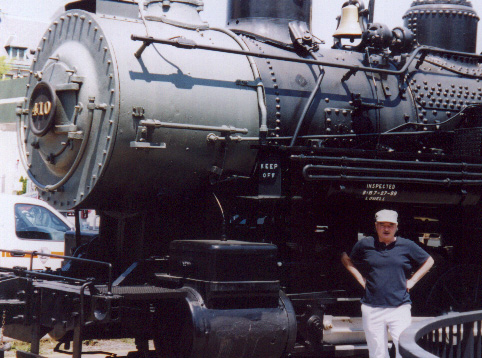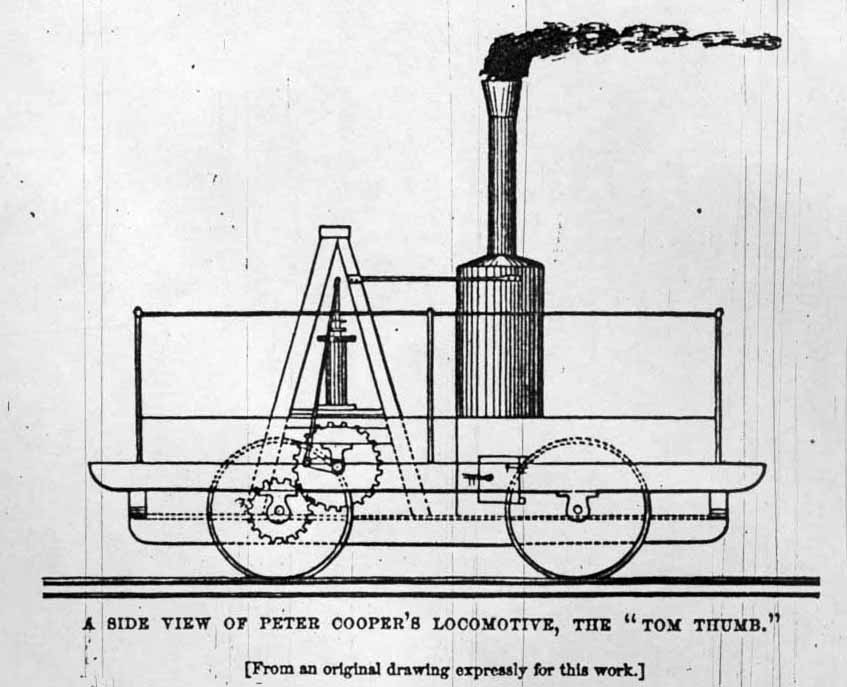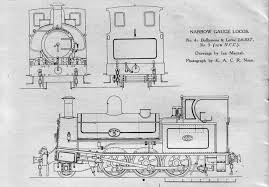
Origins of Modernity
Guns and Rails: Asia, Britain & America, 1760-1918
"transfer of technology from India."
"Whilst Indians had been making guns from brass since the sixteenth century (1500s), Europeans could at first only produce this alloy in relatively small quantities, because...they had no technique for smelting zinc."
p. 131.
"In most of these cases, and especially with zinc smelting, rockets and winnowing machines , we have clear evidence of Europeans studying Asian technology in detail."
Zinc used in making brass canons in India, China, Germany, and Britain.
p. 134.
Technical | Social | Cultural | Personal
What is modernity?
- mechanization -- wind mills - 1500s
- automation -- railroads -1830s
convergence | standardization | adaptation | exaptation | serendipity | cultural expression | errors
Technical or formal aspect
"a new transport technology had emerged–the steam operated railroad. Vital to this were improvements in iron-working which allowed strong rails to be made. The first steam locomotive had been built by Richard Trevithick in 1802 at Coalbrookedale in Shropshire."
Colliery wagons were sufficient for cast iron rails–but cast iron rails could not support railway steam locomotives were replaced by wrought iron in 1821.
Laid for the Stockton and Darlington Railways in 1825, UK.

US was 1827-1830 with the construction of the Baltimore and Ohio Railroad (B&O).
pp. 135-137.
Technical | Social | Cultural | Personal
Convergence:
"One other invention which played a crucial part in the development of railroads as a transport system was the electric telegraph....it was vital for the efficient management of the railroad."
"The electric telegraph, became a practical possibility only when batteries of a reasonably reliable and economical kind were available."
p. 137.
"In many ways it was the technological success of the iron industry that
made railroads possible..."
p.138.
By the 1850s the US had six times the miles of railroads possessed by Britain.
"a staggering 30,000 kilometres were constructed in the United States."
"the majority of the 450 locomotives in the United States had been manufactured within the country." by 1839.
pp. 139-40.
Technical | Social | Cultural | Personal
Standardization:
evident in American manufactures, especially in firearms parts which in 1820s were characterized by interchangeable components or parts.
This was extended to steel making and machine tools.
pp. 145-146.
The "American system of Manufacturers... importance lay in the fact that the manufacture of intricate mechanisms for guns or other devices could now be organized in a manner analogous to the factory system..."
"In other word, with fewer skilled workers, and with machine paced work, a bigger quantity of guns, clocks, Yale locks,or any other standardized mechanical product could be made than by reliance on craft methods."
p. 146.
Technical | Social | Cultural | Personal
Social & Organizational aspect
Locomotives could be built by people with experience of making machines for other industries, notably for cotton spinning, and the workshops used had many tools in common. Thus, in the 1830s, locomotive building developed strongly in the machines shops near the textile mill complex at well, Massachusetts, and at Philadelphia, Pennsylvania, where the Baldwin locomotive works grew out of an enterprise which had previously made machines for textile printing."


By 1839 most locomotives used in America where manufactured here, unlike Argentina which by 1857 had a railway with engines imported from Great Britain. By the 1860s American made engines were widespread.
"The production of rails in any quantity was a more difficult proposition, however. It depended much more on bulk iron production, and hence transformations in the iron industry, which in America were just getting underway in 1830."
"some redesign was needed so that anthracite coal, which was plentiful in Pennsylvania, could fuel them."
pp. 140-141.
Technical | Social | Cultural | Personal
The influence of railroads
The widespread impacts of railroads on people, commerce, geography, and capital formation can not be overstated. In terms of bureaucracy required to fund, manage and operate the railroads there were extensive influences throughout other industries both directly and indirectly.
Directly the extension of railroads demanded raw materials such as: iron, coal, coke, timber, water, electrical wire, batteries, and machine tools.
Indirectly the need for management, payrolls, scheduling and bookkeeping revolutionized the approach to corporate operations, commercial finance, and even the standardization of time zones around the world.
"The railroad and the industries which sustained it are therefore sometimes described as 'the leading sector' in mid-nineteenth century development. On the continent of Europe, however, there was an important distinction between an industrial 'core' consisting of Belgium, Germany, and northern France, and a periphery' in southern and eastern Europe."
"The key question in every such instance is whether investment in railroads was balanced by investments in other industries. If it was not, then the railroads remained technologically dependent on the 'core' countries, and there was a continual flow of resources back from the periphery to the core."
As in Spain where "almost all available investment went into railroads, and 'true manufacturing companies' were neglected."
Consequently "paid handsome dividends to their British shareholders from the 1860s onwards , but contributed little to the Spanish economy."
pp. 141-142.
The error of inevitability
"India was viewed by the British as an agricultural country."
Thus, "It is difficult to avoid the impression that such developments came late to India because railroads were not allowed the catalytic role they played in Europe and the United States, nor could shipyards develop their potential."
"Steelworks and textile mills, when they came [to India], did not transform the whole of Indian society as western societies had been transformed, but remained islands of 'advanced' development surrounded by a more slowly changing and more traditional agricultural economy."
p. 149
Arnold Pacey, Technology in World Civilization
Are we any more than a composite reflection of the tools we use?
The railway created mobility, reliable employment, and collateral dependent industrial organization, but all this came at a tremendous cost.
In terms of political influence, trade unionism, and the centrifugal impact on urban geography, the railway systems altered traditional notions of space, time, energy, and materials that were the foundations of a vast new order.
That order was characterized by the power of industrial automation, mass protest, and a new managerial ethos that eclipsed the agrarian cultural values of an earlier era. That traditional way of life came to be nostalgically viewed as simpler times, smaller populations, and human scales, lived at a pace far slower than the relentless roar and movement of the steam locomotive. That alleged quiet of the eighteenth century was forever lost as railroads devoured forests, iron and coal mines, water sources, and even finance capital and commercial paper.
For better and for worse the engine would literally and figuratively transport enormous numbers of people, alter their habits, and redesign their habitations.
Social critic Henry George had referred to the railroad as "the great centralizer" but it became also the potent mobilizer of people and materials on a scale a hundred times greater than any previous technical transformation.
If modernity meant anything the characteristics of the modern world were bigger, more powerful, and in many ways unstoppable in their extensive influence.
Technical | Social | Cultural | Personal
convergence | standardization | adaptation | exaptation | serendipity | cultural expression | errors | next
Pacey on Meaning | Pursell | Technology defined | Dimensions of Technology | Chronology of tools
 |
||
|---|---|---|
| Tools of Toil: what to read. | ||
| Tools are historical building blocks of technology. | ||
Pursell | Pacey–World | Postman | Tenner |Pacey–meaning| Eberhart | Snow | Kaku | Boulding | Delillo | Kranzberg
Return to start | Site map | Vocabulary